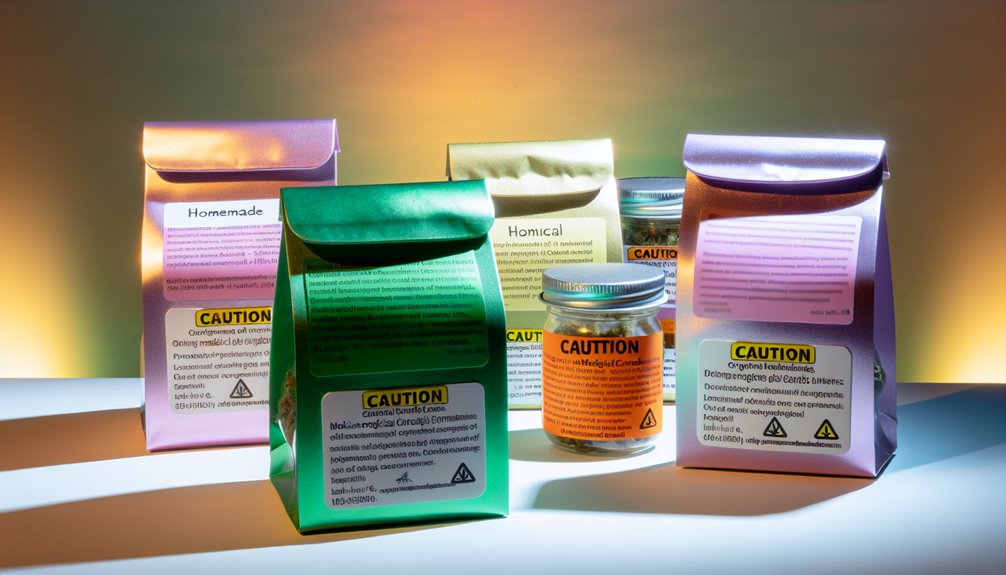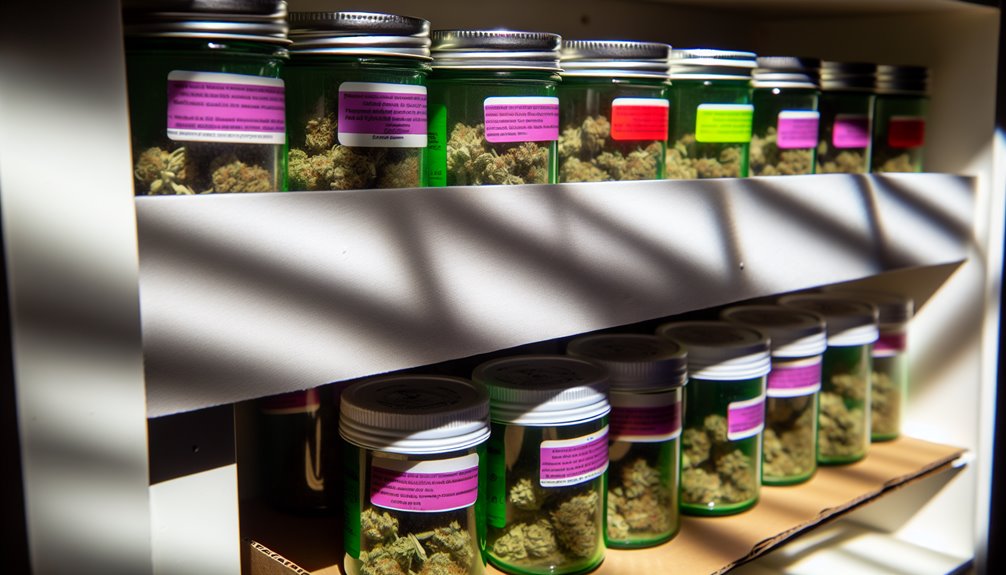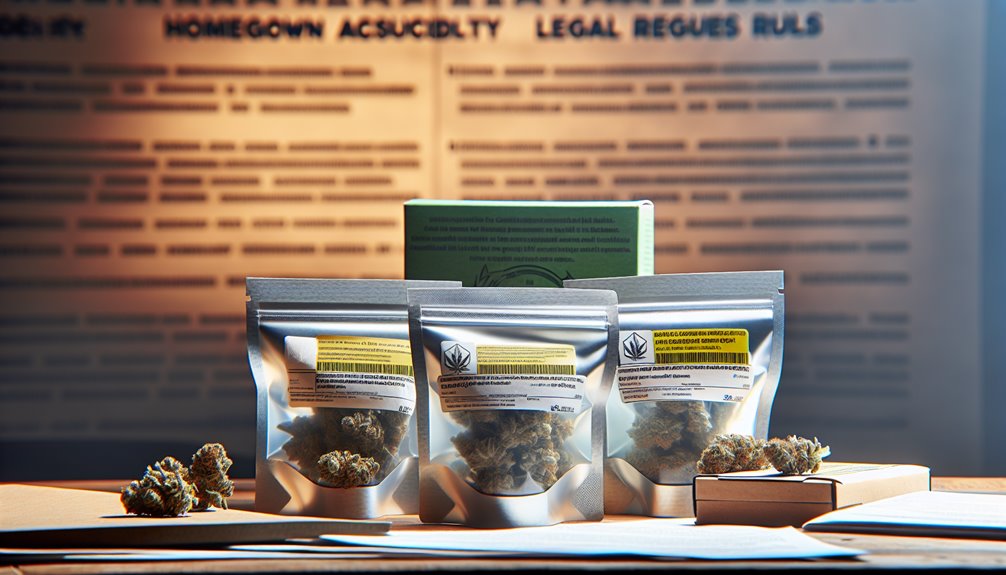Nearly 60% of accidental cannabis exposures involve improper packaging at home. If you’re making tinctures or edibles, compliant labels with dosage, ingredients, and warnings aren’t optional—they’re your first risk control. Child-resistant, tamper-evident closures reduce liability and protect vulnerable users. Proper storage and shelf-life notes preserve potency and safety. Clear lot info supports recalls and allergy checks. And yes, DIY still faces state rules. Here’s how to align your kitchen with compliance without guesswork.
Safety-First Labeling: Dosage, Ingredients, and Warnings

Even before you design the logo, set a compliance baseline: your label must clearly state total THC and CBD per package and per serving, an accurate ingredient list (including carrier oils, flavorings, and potential allergens), a batch/lot number, net weight/volume, manufacture and best-by dates, and storage instructions. You serve patients best by prioritizing clear dosing and allergen disclosure. Quantify cannabinoids with verified calculations, specify serving size, and note variability limits. List all ingredients in descending weight. Flag common allergens and cross-contact risks. Add warnings: impairment, delayed onset, interactions, and “keep out of reach of vulnerable adults.” Provide contact info and a recall-ready lot code.
Child-Resistant and Tamper-Evident Solutions at Home
Often overlooked, child-resistant and tamper-evident packaging is non-negotiable if you’re making medical cannabis at home. You protect patients, prevent diversion, and demonstrate duty of care. Use closures tested to ASTM/Poison Prevention standards: push-and-turn caps, slide-and-click pouches, and certified tins. Add tamper bands and shrink sleeves so opening attempts are obvious. Apply childproof seals on jars and syringes; verify they re-secure after each use. Document suppliers, lot numbers, and closure torque. Train caregivers on proper closing and confirmation checks. Avoid reusing containers; inspect for damage and replace promptly. When in doubt, upgrade to higher-rated mechanisms and log compliance steps.
Storage and Shelf-Life: Preventing Degradation and Contamination

While potency and safety start at formulation, they’re preserved by disciplined storage that controls light, oxygen, temperature, and bioburden. You implement temperature control (60–70°F), humidity management (55–62% RH), and light protection using opaque, UV-blocking containers. You minimize oxygen with tight seals or inert gas, and you label fill/expiration dates to guide rotation. For contamination prevention, sanitize contact surfaces, wear gloves, and segregate infused oils from raw plant material. Store sealed units off the floor, away from heat sources, and document storage conditions. Audit weekly for odor, discoloration, or moisture. If seals fail or mold appears, quarantine and dispose per policy.
Transparency That Builds Patient Trust and Traceability
Disciplined storage only works if patients and regulators can verify what you did and when you did it. You earn trust by documenting each step: who supplied inputs, when you mixed, how you sealed, and where you stored. Practice supplier transparency with receipts, COAs, and contact details. Assign lot IDs to every run and maintain batch traceability from raw material to final package. Time-stamp labels, keep chain-of-custody logs, and note temperature/humidity readings. Record deviations and corrective actions promptly. Provide patients clear ingredient lists, potency ranges, and expiration dates. Retain records for audits and recalls. Share summaries proactively to demonstrate consistent, accountable care.
Navigating State Rules: Staying Legal With DIY Packaging

Before you print a label or seal a jar, map your state’s cannabis packaging rules to your process step by step. Verify patient-only access, child-resistant containers, tamper-evident seals, and opaque exit packaging. Cross-check potency, batch, and warning statements against your state template and any local ordinance. Document your SOPs, lot numbers, and date codes to support recalls.
Confirm storage and transport limits, plus home delivery packaging requirements—temperature control, discreet exterior, and no impairment cues. Track expiration dating, allergens, and universal symbols. Train caregivers on refusal criteria and incident reporting. Re-audit after rule updates, and archive proofs—labels, supplier certifications, test reports.
Conclusion
In conclusion, proper packaging and compliance aren’t just about following the rules—they’re about ensuring the safety and well-being of our patients. At Fells Point Cannabis Docs of Maryland, we genuinely care about the quality and effectiveness of the products we provide. We invite you to come visit us in person or give us a call at (410) 401-4200 to learn more about how we can support you on your journey with medical cannabis. We’re here to help and look forward to welcoming you into our community!

